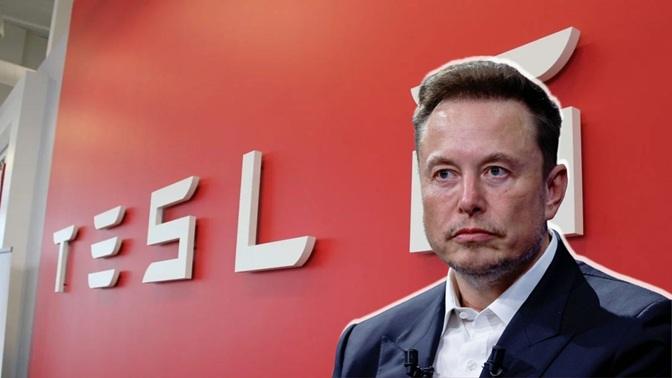The electric vehicle (EV) world is fast-moving, unpredictable, and often full of surprises—and not all of them are good. In the last week alone, three big headlines shook the EV landscape. Tesla’s long-hyped Cybertruck is piling up in inventory yards, Hyundai has put the brakes on its cutting-edge manufacturing tech, and Rivian is doubling down on U.S. manufacturing with a major investment in Illinois. So what does all this mean for the future of EVs? Let’s break it all down in plain language.

Once hailed as the truck of the future, the Tesla Cybertruck was supposed to disrupt the auto industry. With its bold stainless-steel body, “bulletproof” windows, and sci-fi look, it stood out like a spaceship among pickup trucks. And with nearly two million early preorders, it seemed like a guaranteed win. But now? The excitement is fading fast.
According to Tesla-Info, the company is currently sitting on around 10,000 unsold Cybertrucks—more than it managed to sell in the first three months of 2025. That’s a serious red flag. Tesla produced about 6,400 Cybertrucks in Q1 2025, meaning their inventory is outpacing sales by a wide margin. And remember, this is a product that once had a two-year-long waiting list. So what happened?
It seems the hype didn’t match reality. The promised features didn’t fully materialize. Prices soared well beyond early estimates. Range fell short of expectations. And on top of all that, Tesla’s brand image has taken a hit—thanks, in part, to CEO Elon Musk’s controversial public and political statements.
Tesla even admitted in its latest earnings call that “changing political sentiment” may be affecting sales. Some buyers now see the Cybertruck as more of a controversial symbol than a cool innovation, with several trucks becoming targets of vandalism. Add in growing dissatisfaction with Musk and you have a recipe for falling demand.
Even after releasing a cheaper version and clearing the reservation list, Tesla still can’t move these trucks. It now seems unlikely that the company will reach its ambitious target of selling 250,000 Cybertrucks per year.

Tesla Cybertruck: Production vs. Inventory (2025)
| Metric | Units |
|---|---|
| Produced in Q1 2025 | 6,400 |
| In Inventory (Q2 2025) | 10,000 |
This table clearly shows Tesla produced 6,400 Cybertrucks in the first quarter of 2025, but inventory has ballooned to 10,000 units, signaling lower-than-expected demand.
Hyundai Hits Pause on Hypercasting
Meanwhile, Hyundai had plans to revolutionize car production using a process called hypercasting—their own version of Tesla’s gigacasting. The idea is to build large chunks of a vehicle body from a single metal mold instead of welding together hundreds of small parts. This cuts production time, cost, and weight.
Tesla already uses gigacasting in the Model Y, eliminating over 370 parts and 1,600 welds. Hyundai hoped to do something similar in their massive Ulsan plant in South Korea with a $730 million investment. But now? That plan’s on hold until 2028.
Why the delay? A mix of sluggish EV demand and the U.S. government’s 25% import tariff on foreign-made vehicles. Since Hyundai exports over a million vehicles to the U.S. annually, this tariff would add about $5,900 per car, slashing into profits.
Rather than take the hit, Hyundai is shifting focus. It’s now pumping $9.3 billion into U.S. production, especially at its Metaplant in Georgia, which will produce up to 500,000 EVs a year. Across all its U.S. sites, Hyundai aims to produce 1.2 million vehicles annually.
In short: Hyundai is prioritizing U.S. production now and will revisit fancy manufacturing tech like hypercasting once the market (and tariff situation) stabilizes.
What Does This All Mean for the EV Industry?
These three stories offer a snapshot of the complex, fast-evolving EV landscape. Here’s what we can learn:
- Hype Isn’t Enough
The Cybertruck saga shows that no matter how flashy a product is, it has to deliver on promises. Price, range, and practicality still matter. And public perception of leadership can sway buyer sentiment. - Policy Impacts Production
Hyundai’s delayed hypercasting effort underscores how tariffs and politics directly impact automaker strategy. Sometimes it’s smarter to adapt than to push forward with innovation if the market doesn’t support it yet. - Localization Is the Future
Rivian’s investment in a supplier park is a smart, forward-thinking move. As global supply chains face uncertainty, localizing production can offer cost savings, efficiency, and stability.
Hyundai’s decision to delay hypercasting raises a serious question: Are U.S. tariffs stifling innovation? By forcing automakers to redirect money away from R&D and into production localization, are we slowing down the next big technological leap?
There’s no easy answer, but it’s a concern worth watching. If building new tech becomes too expensive or risky, automakers might take fewer chances—and that could affect EV progress globally.
This past week shows us that the EV market is entering a new phase—one where hype gives way to hard realities. Automakers now have to prove value, adapt to global politics, and find smarter ways to build and deliver their vehicles.
Whether you’re a fan of Tesla’s bold moves, Hyundai’s practical pivot, or Rivian’s steady rise, one thing is clear: The EV revolution is far from over—but the road ahead will be anything but smooth. What do you think? Are these smart strategic moves or signs of trouble? Drop your thoughts below!
PEOPLE WHO READ THIS, ALSO READ




